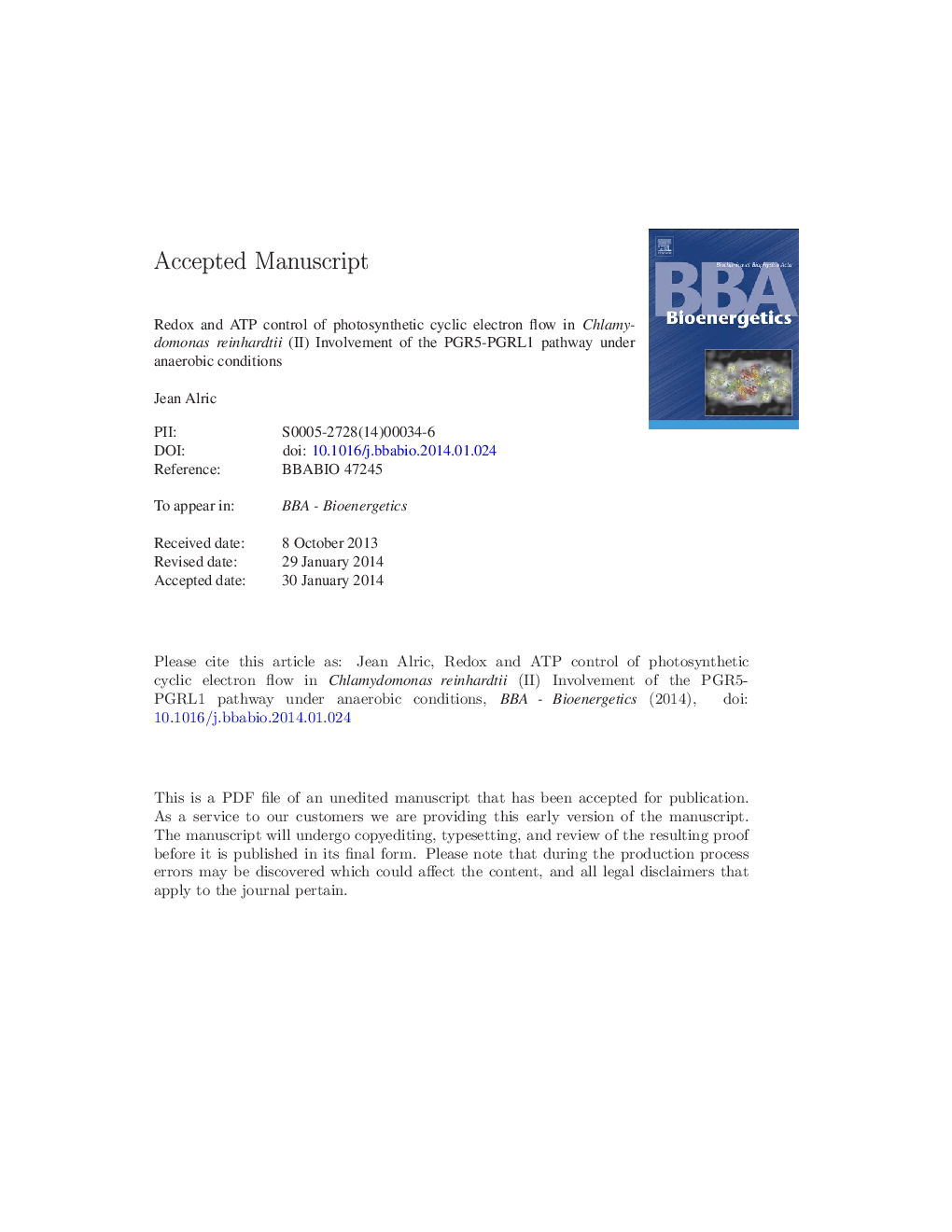| Article ID | Journal | Published Year | Pages | File Type |
|---|---|---|---|---|
| 10795705 | Biochimica et Biophysica Acta (BBA) - Bioenergetics | 2014 | 34 Pages |
Abstract
In oxygenic photosynthesis, cyclic electron flow around photosystem I denotes the recycling of electrons from stromal electron carriers (reduced nicotinamide adenine dinucleotide phosphate, NADPH, ferredoxin) towards the plastoquinone pool. Whether or not cyclic electron flow operates similarly in Chlamydomonas and plants has been a matter of debate. Here we would like to emphasize that despite the regulatory or metabolic differences that may exist between green algae and plants, the general mechanism of cyclic electron flow seems conserved across species. The most accurate way to describe cyclic electron flow remains to be a redox equilibration model, while the supramolecular reorganization of the thylakoid membrane (state transitions) has little impact on the maximal rate of cyclic electron flow. The maximum capacity of the cyclic pathways is shown to be around 60 electrons transferred per photosystem per second, which is in Chlamydomonas cells treated with 3(3,4-dichlorophenyl)-1,1-dimethylurea (DCMU) and placed under anoxic conditions. Part I of this work (aerobic conditions) was published in a previous issue of BBA-Bioenergetics (vol. 1797, pp. 44-51) (Alric et al., 2010).
Keywords
Related Topics
Life Sciences
Agricultural and Biological Sciences
Plant Science
Authors
Jean Alric,
